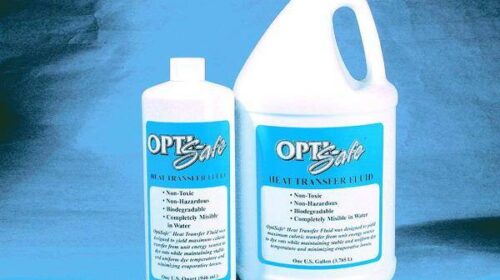Heat Transfer Fluids Market to Surge at 7.59% CAGR, which is anticipated to reach USD 14.64 billion by 2030
Heat Transfer Fluids Market –Global Analysis of Market Size, Share & Trends for 2019 – 2020 and Forecasts to 2030 is anticipated to reach USD 14.64 billion by 2030. According to this report, the main drivers to boom the Global Heat Transfer Fluids Market are the use of heat transfer fluids, which are industrial products derived from petroleum sources, to prevent overheating and store thermal energy, and the increasing demand for the product due to its low viscosity, non-corrosive nature, high thermal conductivity and diffusivity and extreme phase transition temperatures of the market for heat transfer fluids. In addition, the acceptance of energy transfer devices such as heat exchangers and heat pumps has increased significantly. This should offer the Heat Transfer Fluids Market lucrative growth opportunities in the near future.
The market report on Heat Transfer Fluids Market includes in-depth insights as:
- The estimated value of the market was USD 7.05 billion in the year 2020.
- Heat Transfer Fluids in Asia Pacific held the largest market share in the year 2020.
- Based on Type, Mineral Oils emerged as a key segment in the Heat Transfer Fluids market.
- Based on End-Use Industry, Chemicals emerged as a key segment in the Heat Transfer Fluids market.
- Key players are likely to focus on product innovations and expansion through mergers to retain their positions in developed markets.
“Due to better heat transfer properties than petroleum of comparable viscosity, the Heat Transfer Fluids Market is booming. They have exceptional thermal and oxidation stability and are widely used in open heat transfer systems, chemical processing equipment, laminating and calendering rolls, molds, etc., and dyes in the rubber and plastic, zinc die casting, and aluminum alloy industries. The use of thermal HTFs leads to an increased production volume, improved product quality, and low maintenance costs. Coupled with reduced costs, the operation has grown the Heat Transfer Fluids Market tremendously”, according to this report
Heat transfer fluids (HTF) are gases or liquids that are specially made to transfer heat from one system to another. These fluids are made from highly refined petroleum, synthetic hydrocarbons, or siloxanes (silicone). They deliver high temperatures at very low system temperatures. Pressures and also provide safety, low maintenance, and longer lifespan as main benefits. This is expected to have an impact on the HTF market at a later date. Heat transfer fluids are used to prevent overheating of substances during the heat transfer process. Applications in the automotive industry, oil and gas processing, manufacturing processes, and solar power plants, to name just a few.
The Heat Transfer Fluids Market is segmented by Type into Mineral Oils, Synthetic Fluids, Glycols, and Others. Mineral Oil segment accounted for the major share in 2019. The low-cost properties of Mineral Oils are increasing in the Heat Transfer Fluids Market. Even if the cost of replacing the fluid is higher, the cost of replacing Mineral Oil is much less than the cost of replacing a synthetic fluid. in the APAC and MEA regions, where the focus is on the use of low-cost products
Key Players in the Market
- Some of the key players operating in the Heat Transfer Fluids Market are Arkema S.A., BASF SE, BP PLC, Daicel Chemical Industries, Ltd., Exxon Mobil Corporation, JX Holdings, Inc, Lyondell Basell Industries N.V., Nippon Refine Co. Ltd., Royal Dutch Shell PLC, Sinopec Corp., SK Innovation Co., Ltd.
Get Valuable Insights into Heat Transfer Fluids Market.
In the new report, CRI Report thrives to present an unbiased analysis of the Heat Transfer Fluids Market that covers the historical demand data as well as the forecast figures for the period, i.e., 2021-2030. The study includes compelling insights into growth that is witnessed in the market. Heat Transfer Fluids Market is segmented By Type into Mineral Oils, Synthetic Fluids, Glycols, and Others; By End-Use Industry into Chemical, Oil & Gas, Food & Beverages, Pharmaceutical, Renewable Energy, Automotive, HVAC & Refrigeration, and Others. Geographically, the market is segmented into North America, Latin America, Europe, Asia Pacific, and Middle East, and Africa.




